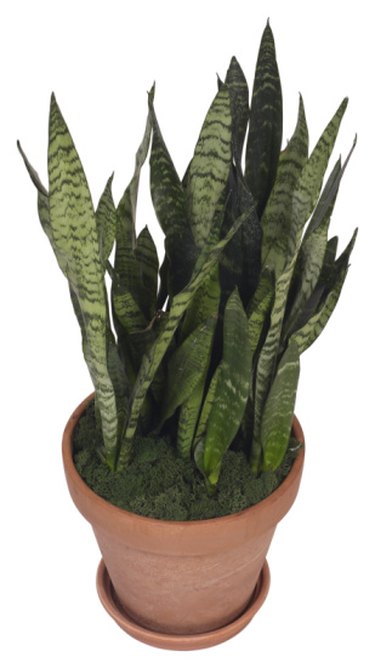Some Of Snake Plant Leaves Turning Yellow
Table of ContentsTop Guidelines Of Snake Plant Leaves Turning YellowThe 3-Minute Rule for Snake Plant Leaves Turning YellowThe Of Snake Plant Leaves Turning YellowOur Snake Plant Leaves Turning Yellow IdeasThe Ultimate Guide To Snake Plant Leaves Turning YellowFascination About Snake Plant Leaves Turning Yellow
Most symptoms of origin rot aren't visible to the exterior of a plant, with the exception of one indicator yellowing fallen leaves (Snake Plant Leaves Turning Yellow). When a snake plant has yellow leaves, this is frequently a sign of overwatering resulting in root rot. When yellow, the fallen leave is basically dead since it's not getting any kind of nutrients from the decayed rootsIf the dirt is bone dry, it's time to sprinkle the plant. Snake plants actually work best in clothes dryer conditions than wet ones, so you must only sprinkle your snake plant once every 7-10 days.
Instead, the natural sunshine needs to be indirect. This indicates that if your serpent plant rests on a windowsill or surface area that is regularly in the sunlight, this is possibly the reason for the yellowing leaves. Yellow leaves imply that the plant is melting from the sun, which then ultimately transforms brownish and crispy.
The Definitive Guide to Snake Plant Leaves Turning Yellow
The sunshine will then concentrate on specific parts of the leaves, resulting in scorched fallen leaves. Residence plants require consistency to thrive.
Any type of sudden modifications in these demands, specifically the temperature level, can lead to the stress of a plant. That's best tension from extreme modifications in temperature level brings about yellow fallen leaves. The major factor to prevent placing your snake plant through continuous temperature changes is that it completely influences the dissipation process.
Of training course, in the beginning, you may need to relocate the plant to find its perfect setting once it's discovered a home, leave it there. Just ensure the plant isn't near any home heating or air conditioning aspects like a/c unit or radiators. Insect invasions such as mealybugs and spider mites aren't too usual in snake plants, yet they can still be the root cause of yellowing fallen leaves.
More About Snake Plant Leaves Turning Yellow
When over-fertilized, the plant food will do one of 2 things. It will either burn the fallen leaves, causing them to transform yellow, or it will soak up way too much moisture from the soil. This will certainly avoid the plant from absorbing the wetness it requires to make it through, which basically causes a dehydrated plant.
If you believe you might have over-fertilized your snake plant, it's best to leave the plant alone for a couple of weeks (Snake Plant Leaves Turning Yellow) to months
When we stare at our precious snake plant and its lush, glossy fallen leaves, we're seeing the magic of chlorophyll at job! When snake plant leaves begin to transform yellow, it's an indicator they're doing not have chlorophyll.
The Best Strategy To Use For Snake Plant Leaves Turning Yellow
I've seen my share of difficulties with the sturdy Serpent Plant, including the mysterious yellowing of leaves. Let's study the various reasons behind this and how to tackle them. Paradoxically, our excellent objectives can often hurt our Serpent Plants. One usual source of yellow leaves is. Our first offender is something that may amaze you.

Below's a handy overview for you: from the pot. For an extra comprehensive overview on repotting, inspect out our article on Snake Plant kingdom are exotic natives, and they like their temperature level stable and warm.
The Ultimate Guide To Snake Plant Leaves Turning Yellow
:max_bytes(150000):strip_icc()/yellow-leaves-GettyImages-1433069073-98815dba2356427cb6a35d0f53f68983.jpg)
The option is easy: change your Snake Plant to a pot with adequate water drainage holes. This will certainly assist preserve the right dampness balance in the dirt. In my experience, the type of dirt you use for your serpent plant is critical. can contribute to your plant's standing water trouble, and most of us know that standing water is a large no-no for snake plants.
Even the sun-loving serpent plant has its limitations. To relieve this, move your snake plant to an area with.
All about Snake Plant Leaves Turning Yellow

Parasites and fungal infections can suck the sap from the leaves, denying the snake plant of nutrients and triggering the fallen leaves to transform yellow. The remedy? Put on regulate the bugs and fungal infections. Below's a fast guide to do it: neem oil from a gardening store. the neem oil with water complying with the suggested ratio on the package.
Snake plant leaves are susceptible to yellowing if the plant is not well cared for. Healthy and balanced serpent plants have a yellow tinting around the sides of their broad, vertical fallen leave blades.